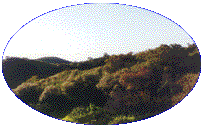
| Cultivated privated property | Semi-cultivated private Property |
| Enumerous Bermuda Grass
Enumerous Bur Clover Enumerous Crab Grass 4 Dandelion 2 Oxalis pes-caprae (sour grass) |
22 Wild Mustard
11 Cheeseweed 11 Common Groundsel 4 Wholly Blue Curls 3 Yellow Sweet Clover 2 Italian Thistle 1 Red Stem Fillary 1 Telegraph Weed and multiple "unidentified" grasses |
| Wild Land | Construction Wasteland |
| Enumerous Wild Oats
11 Wild Radish 11 Telegraph Weed 6 Milkweed Thistle 1 Wholly Lupin |
Enumerous Wild Barley
10 Telegraph Weed 8 Wild Mustard 1 Wild Oats |